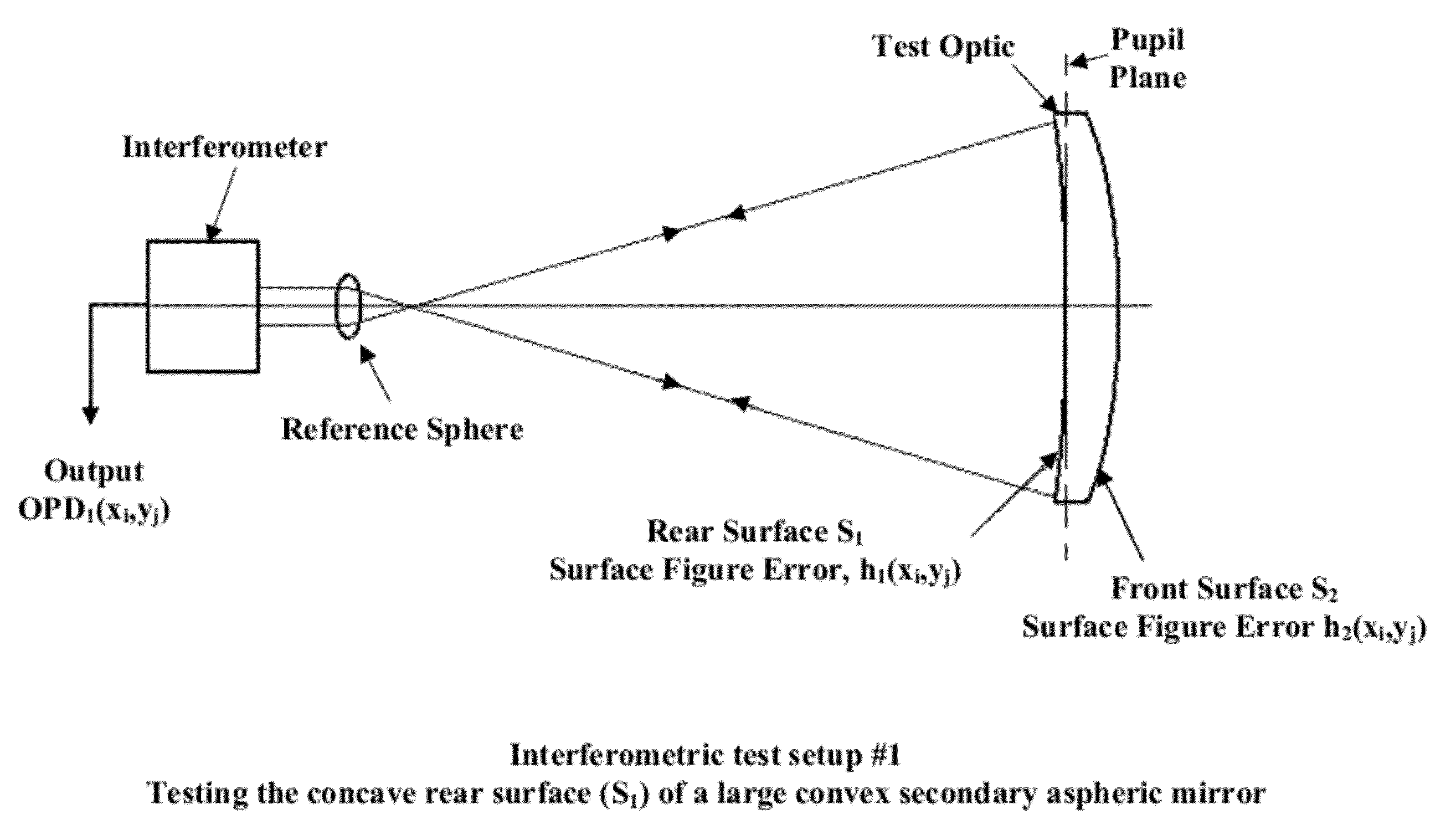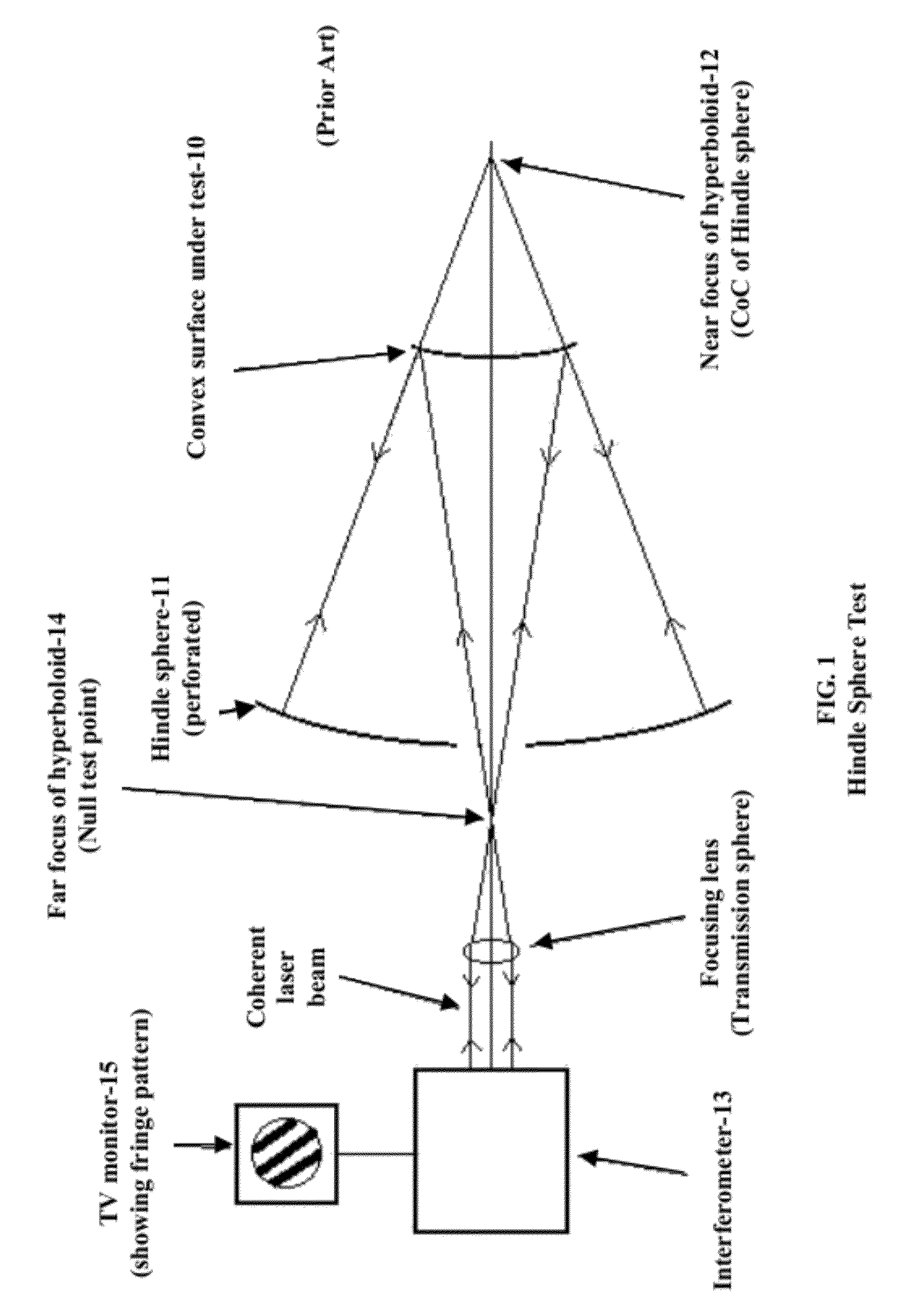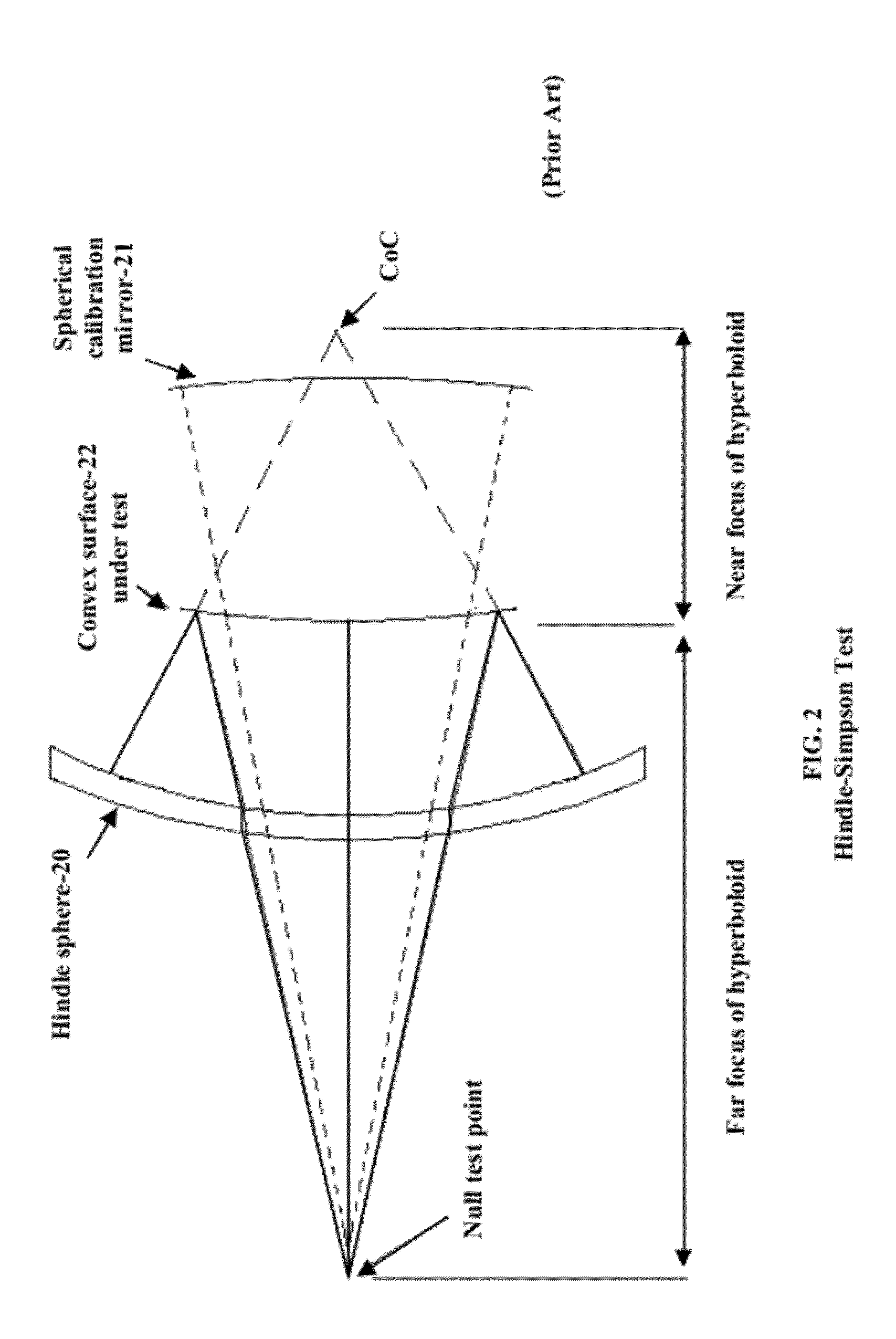Surface figure test method for large convex optical surfaces
a technology of optical surfaces and surface figures, applied in the direction of reflection surface testing, instruments, measurement devices, etc., can solve the problems of reducing the complexity and cost of the test setup, reducing the requirement for large-scale ancillary optics, and reducing the complexity and size of the test setup. , to achieve the effect of reducing complexity and size, reducing the cost of fabrication, and reducing the cost of production
- Summary
- Abstract
- Description
- Claims
- Application Information
AI Technical Summary
Benefits of technology
Problems solved by technology
Method used
Image
Examples
case 1
Case 1: Using Test Setups #1, #2, and #3
[0030]The test setup in FIG. 5 is inherently a null test if the rear surface S1 has a concave spherical shape. Thus, no null lens is needed for this particular test setup. Null lenses are shown in the other two test setups used in this example (FIGS. 6 and 7). Instead of using null lenses, one can also envisage use of Computer Generated Holograms (CGH) to null the aberrations. The diameters of the CGHs would need to be no larger than the null lens diameters; often their diameters would be smaller. FIG. 9 shows typical residual null test accuracy when simple null lenses are used with spherical or planar surfaces. Residual null test error could be entirely removed by use of multi-element null lenses (or mirrors), or aspheric null lenses, or by use of null CGHs.
[0031]The interferometric test setup #1 shown in FIG. 5 is used to test the concave rear surface S1 of a large convex secondary aspheric mirror, the test optic, for this example. The front...
case 2
Case 2: Using Test Setups #1, #2, and #4 (FIG. 8).
[0041]Test setups #1 and #2 are discussed above. In interferometric null test #4 in FIG. 8 the front surface S2 of the test optic is facing the interferometer. A coherent beam from the interferometer passes through the null lens, fills the test optic aperture, passes through the test optic, is reflected back through the test optic by the spherical return mirror, and back into the interferometer generating the optical path difference array OPD4(xi,yj). This OPD array includes errors introduced by S1 and S2 and any inhomogeneity in the substrate material
Mathematical Analysis for Case 2:
[0042]OPD4(xi,yj) is given by the following equation:
OPD4(xi,yj)=−2·(n−1)·h2(xi,yj)+2·(n−1)·h1(xi,yj)+2·OPDI(xi,yj). (7)
When interferometric tests #1, #2, and #4 are used as the three independent tests, Equations 1, 2, and 7 have the following solutions for h1(xi, yj), h2(xi,yj) and OPDI(xi,yj):
[0043]h1(xi,yj)=OPD1(xi,yj)2,(8)h2(xi,yj)=OPD4(xi,yj)...
case 3
Case 3: Using Test Setups #1 and #2 only where OPDI(xi,yj) is Assumed to be Zero)
Mathematical Analysis for Case 3
[0044]For this degenerate case, OPDI(xi,yj)=0, Equations 1 and 2 (and Equations 8 and 9) have the following solutions for h1(xi,yj) and h2(xi,yj):
[0045]h1(xi,yj)=OPD1(xi,yj)2(11)h2(xi,yj)=(n-1)·OPD1(xi,yj)-OPD2(xi,yj)2·n(12)
[0046]As previously, data obtained from Equation 11 for h1(xi,yj) can be used to improve the surface figure accuracy of the rear surface of the test optic. Similarly, data obtained from Equation 12 for h2(xi,yj) can be used to improve the surface figure accuracy of the front surface of the test optic.
[0047]Again, while it might only be necessary to correct rear surface figure error h1(xi,yj) to perhaps 1-λ (HeNe), the front surface figure error h2(xi,yj) generally would have to be corrected to higher accuracy, typically to λ / 10 (HeNe).
PUM
 Login to View More
Login to View More Abstract
Description
Claims
Application Information
 Login to View More
Login to View More - R&D
- Intellectual Property
- Life Sciences
- Materials
- Tech Scout
- Unparalleled Data Quality
- Higher Quality Content
- 60% Fewer Hallucinations
Browse by: Latest US Patents, China's latest patents, Technical Efficacy Thesaurus, Application Domain, Technology Topic, Popular Technical Reports.
© 2025 PatSnap. All rights reserved.Legal|Privacy policy|Modern Slavery Act Transparency Statement|Sitemap|About US| Contact US: help@patsnap.com



